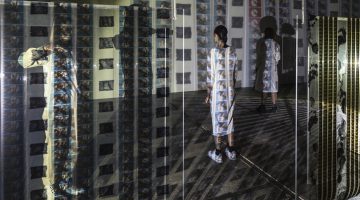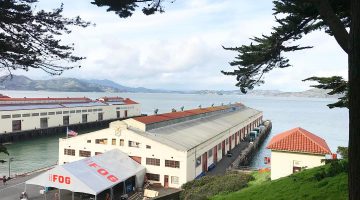
Jay DeFeo. Incision, 1958-1961. Oil and string on canvas mounted on board. 118 in. x 55 5/8 in. x 9 3/8 in. Source: San Francisco Museum of Modern Art.
On my first vacation home from studying art conservation—restoration to Europeans, or, applied to American work, a term that is basically code for “back alley abortion”—I visited the San Francisco Museum of Fine Art. Conservation courses that first semester focused on why art went bad: mechanical damage, benign neglect, and inherent vice. The material with the worst inherent vice, nitrate film, especially delighted my class because it has been reported to spontaneously combust. Nerds. The worst-case scenario is always the most interesting if it isn’t your problem. Anyway, when I stood in front of Jay DeFeo’s “Incision” (1958-1961) for the first time since beginning my education, I laughed to myself (and the whole gallery). Jay DeFeo’s paintings are beautiful, spectacular conservation problems.
Oil paint must be dry before another layer is added, or changes in temperature and relative humidity will cause it to swell and shrink, causing cracks and bubbles. DeFeo’s paintings were inches deep, (some areas appear to be up to a foot deep), and, though certain pieces took years to make, I doubt she always held back to wait for a paint layer to dry. Heavy and unwieldy doesn’t begin to describe them; years later, I watched six tense art handlers relying heavily on a forklift to turn “Incision” from back to front. The panels DeFeo painted can’t support her works over 2,000 pounds. In 1998 a team lead by Niccolo Caldararo shored up “The Rose’s” backing with a “composite system based on an airplane wing design with plywood, epoxy and fiberglass and steel inset frame.” Don’t get me started on the dust that can accumulate in “Incision’s” fissures, and I swear I saw a cigarette butt in it there.
Paula De Cristofaro, Conservator of Paintings at the San Francisco Museum of Modern Art, will give a talk about conserving “Incision” this Thursday at 6:30pm. She is a skilled orator with one of the coolest jobs in the museum, (past treatments of beautiful disasters include Rauschenberg’s Untitled (Glossy Black Painting) and Motherwell’s “Elegy to the Spanish Republic, No. 57”), and understands art deeply. Though I’m obviously biased, I believe there’s great value in learning about art from someone who’s touched it intimately and helped it survive.
Paula De Cristofaro‘s will give a talk about Jay DeFeo’s “Incision” at SFMOMA on Thursday, January 17. Meet in the Haas Atrium at 6:30 p.m.
-Kendall George



